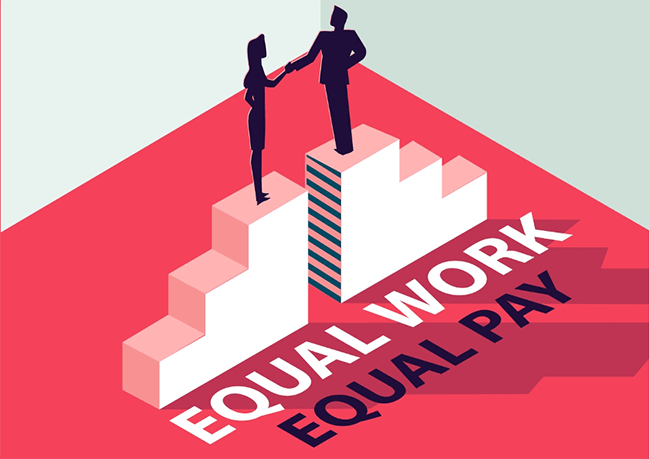
Five Skills Key to Successful Business Operations Management – You Could be Great at Operations if..
You cannot be a good business leader unless you thoroughly understand the business operations in your organization and how it links to its performance. I have noticed one big reason business strategies fail – it is the unbelievable reality that senior leadership many a times doesn’t understand the basics of their business. How it runs and what makes it run. An operations mindset is extremely critical for all leaders – No matter how good you are at framing strategy; it also has to get executed successfully for an organization to succeed. This is where the business operations team can play a big role, by not only providing insights to the leadership on the ways to improve business performance through profitable growth and strategic management of costs and risks but also to reduce the gap between strategy and execution through disciplined process implementation. Quite a few big buzz words there. But it boils down to one thing – to succeed in business, you have to understand and be good at operations. I strongly believe an operational mindset is a mental “muscle” that can be developed. For all those who want to develop this muscle or are thinking of a career in business operations, this post is for them.
So without further ado, here are the five top skills/loves that I believe are must-haves for those who want to enhance the performance and productivity of organizations through understanding and improving their operations:
Must-Have #1 – You love people:
Lee Iacocca said: “In the end, all business operations can be reduced to three words: people, product and profits. Unless you’ve got a good team, you can’t do much with the other two.” Understanding people across multiple functions and roles and leveraging their strengths is extremely important to meet objectives – in an operational role where you have to work mainly in a matrix structure where you have lots of responsibility but not always the required hierarchical authority, this becomes paramount. You must know how to connect with people and energize and enthuse them. Communication skills, beyond the verbal and the written, the ability to listen and read between the lines is an useful asset to align people to your goals. And all this is not possible unless you have a genuine interest and love for people.
Must-Have #2 – You love numbers:
Does the idea of deciphering lots and lots of rows and columns of numbers spread across sheets give you the shivers ? As they say, the devil lies in the details and to be good at operations, making sense of numbers must excite you. Plenty of common sense plus and an ability to derive meaning out of the different ways numbers can be combined or dissected to arrive at the right performance metrics for early warning signals for the business as well as measuring the results is part and parcel of the operations role. Knowing your numbers and the different levers that can be applied to them makes you the master of the game.
Must-Have #3 – You love wearing multiple hats:
In operations, you have to be put yourself in the shoes of different functions on a day-to-day basis – sales, IT, finance, business, delivery – to be able to understand the requirements from all perspectives and execute on it. A specialist in operations with a generalist bent of mind to connect all the dots in the organization for the right solutions. You have to become the subject matter expert in many things at the same time. Quoting from an article by Vikram Mansharamani in HBR – there appears to be reasonable and robust data suggesting that generalists are better at navigating uncertainty. Professor Phillip Tetlock conducted a 20+ year study of 284 professional forecasters. He asked them to predict the probability of various occurrences both within and outside of their areas of expertise. Analysis of the 80,000+ forecasts found that experts are less accurate predictors than non-experts in their area of expertise. Tetlock’s conclusion: when seeking accuracy of predictions, it is better to turn to those like “Berlin’s prototypical fox, those who know many little things, draw from an eclectic array of traditions, and accept ambiguity and contradictions.” Ideological reliance on a single perspective appears detrimental to one’s ability to successfully navigate vague or poorly-defined situations (which are more prevalent today than ever before).
Must-Have #4 – You love solving puzzles:
Providing smart and creative recommendations for business process improvement is one of the key areas in which business operations team can be key contributors. As an operation person, you have to identify the problems, dig for knowledge in the vast amounts of available data and then analyze it to arrive at the areas of focus. As per research by Gartner, through 2012, 80% of organizations will struggle to recruit the talent required to meet their business analytics objectives. This needs an inquisitive mind, a persistent approach and deduction skills. If you are a crossword or Sudoku fanatic, you are in the right “zone” here 🙂
Must-Have #5 – You love WORK:
Back end work, strategic work, boring work, last-minute deadline work, grunt work, thinking work, transactional work, delegated work, filling in for someone else work – your work landscape in an operations role will constantly be changing and switching. So, you must have a great love for work by itself and in itself in all its myriad shapes and forms. If you are particular about doing only one type of work and consider certain types of work below you – this is certainly not the role for you. The duties and responsibilities in this role are fluid and are different from company to company or even business head to business head. I have rarely across a defined job description that remains constant over a period of time in my career. So, your guiding principles and measuring stick for your work should be based on what you want to achieve, not what type of work is needed to get there. A passion for work coupled with an ability to set your own standards for excellence is crucial in this role.
In addition to the above, a business operations person must be able to exude confidence, have conviction and be firm on what he/she believes is the right thing to do. It is only then that by focusing on some of the points where structure, processes, people and systems intersect, and engaging and influencing all the stakeholders involved to work on those critical junctions, the business operations team can release benefits that ripple across the organization.
What other skills do you think are necessary for successful business management and operations? What have I missed? Please share your experiences below. I would love to hear and learn from you.
Image courtesy – http://www.flickr.com/photos/michaelheiss/3090102907




